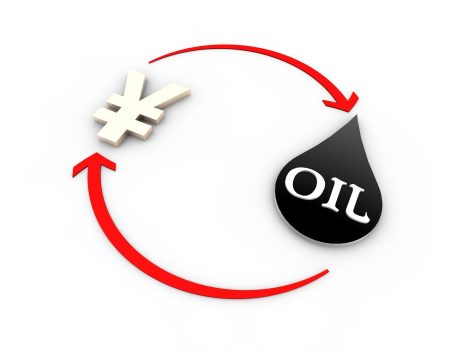Performance[1]
Total Returns (%) Average Annual Total Returns
|
3 Months |
YTD |
1 Year |
3 Years |
5 Years |
10 Years |
20 Years |
|
|
Stock Fund – Class I |
0.02 |
8.52 |
18.97 |
7.30 |
13.00 |
10.60 |
9.31 |
|
Stock Fund – Class X |
0.03 |
8.58 |
19.09 |
7.38 |
13.06 |
10.63 |
9.33 |
|
S&P 500 Index |
4.28 |
15.29 |
24.56 |
10.01 |
15.05 |
12.86 |
10.29 |
|
Russell 1000 Value Index |
-2.17 |
6.62 |
13.06 |
5.52 |
9.01 |
8.23 |
8.13 |
| Returns represent past performance and do not guarantee future results. Investment return and share price will fluctuate with market conditions, and investors may have a gain or loss when shares are sold. Mutual Fund performance changes over time and currently may be significantly lower than stated above. Performance is updated and published monthly. Current month-end performance can be obtained atdodgeandcox.com or by calling 800-621-3979. |
Market Commentary
U.S. equity markets rose during the second quarter of 2024, extending the strong market uptrend since 2023. For the third successive quarter, the S&P 500 ended with a positive total return, as investors were encouraged by better-than-expected earnings growth,[2] a resilient economy, improving inflation indicators, and renewed expectations for interest rate cuts this year.
Continuing the pattern of the past 12 months, market gains were concentrated among large market capitalization[3] companies in the Information Technology and Communications sectors, particularly those tied to artificial intelligence (AI). NVIDIA (NVDA), a world leader in AI computing, rose 37% during the second quarter, accounting for 44% of the S&P 500’s quarterly performance. Apple (AAPL), Alphabet (GOOG), and Microsoft (MSFT) also contributed significantly. Without these four companies, the S&P 500 would have posted a negative return for the quarter.
This outsized performance by a small number of large companies increased the S&P 500’s market concentration: the top five companies by market capitalization now represent a record 29% of the Index, well above the historical average weight of 15% since the dot-com bubble over 25 years ago.
U.S. growth stocks[4] continued to outperform value stocks during the quarter, and the valuation disparity between value and growth stocks widened. The Russell 1000 Value ended the quarter trading at 16.1 times forward earnings[5] versus 28.8 times for the Russell 1000 Growth Index.[6]
Portfolio Strategy
The Fund had a nearly flat return in the second quarter of 2024, underperforming the S&P 500 but outperforming the Russell 1000 Value.[7] Relative to the S&P 500, the Fund’s biggest detractors were its holdings and underweight in the Information Technology sector, along with its holdings and overweight in the Health Care sector. Compared to the Russell 1000 Value, the Fund’s holdings in Communication Services and Industrials were the largest contributors.
We believe the highly concentrated market gains over the last year are creating opportunities for bottom-up, value-oriented investors like Dodge & Cox. In assembling the portfolio, we take a cautious approach towards stocks with very optimistic outlooks for growth and margins. We are also mindful that a weaker economic environment cannot be ruled out, and we are finding more opportunities in companies with lower valuations and less economic sensitivity.
During the second quarter, we increased the Fund’s exposure to Health Care services, specifically Medicare Advantage plan providers, where the current challenging underwriting cycle contrasts with attractive long-term growth prospects. We believe Medicare Advantage is an attractive market segment with high barriers to entry and margin improvement potential. We established a new position in Humana (HUM), the second-largest Medicare Advantage provider, and we increased the Fund’s position in CVS Health (CVS), the third-largest player in this market.[8] Both companies trade at a low valuation on cyclically depressed earnings, which we believe should recover over time.
Conversely, we reduced the Fund’s exposure to companies with higher valuations and/or rising risks by selling Microchip Technology (MCHP) and Hewlett Packard Enterprise (HPE). We also trimmed the Fund’s Financials positions, following their strong performance over the past year.
The Fund remains overweight Financials, Health Care, and Communication Services compared to both the S&P 500 and the Russell 1000 Value, and underweight Information Technology, Consumer Staples, Utilities, and Real Estate.
We continue to be optimistic about the long-term outlook for the Fund, which is diversified across a broad range of sectors and investment themes. We believe that the Fund is well positioned for a variety of economic environments. The Fund trades at an attractive valuation of 13.9 times forward earnings, compared to 21.6 times and 16.1 times for the S&P 500 and the Russell 1000 Value, respectively. Thank you for your continued confidence in Dodge & Cox.
Performance Review (Fund’s Class I Shares vs. S&P 500)
Second Quarter
Key contributors to relative results included the Fund’s:
- Stock selection in Industrials, particularly GE Aerospace (GE);
- Underweight and holdings in Consumer Discretionary; and
- Position in Alnylam Pharmaceuticals (ALNY).
Key detractors from relative results included the Fund’s:
- Stock selection and underweight position in Information Technology;
- Overweight and holdings in Health Care, notably CVS Health, Cigna (CI), Zimmer Biomet (ZBH), and GSK (GSK); and
- Overweight position in Financials, including Fiserv (FI).
Year to Date
Key contributors to relative results included the Fund’s:
- Stock selection in Industrials, notably GE Aerospace;
- Stock selection and underweight position in Consumer Discretionary;
- Underweight position in Real Estate; and
- Positions in Coherent and Wells Fargo (WFC).
Performance Review (Fund’s Class I Shares vs. S&P 500)
Key detractors from relative results included the Fund’s:
- Stock selection and underweight Information Technology;
- Health Care overweight and holdings, particularly CVS Health, Gilead Sciences (GILD), and Sanofi (SNY); and
- Stock selection in Communication Services, primarily Charter Communications (CHTR).
Performance Review (Fund’s Class I Shares vs. Russell 1000 Value)
Second Quarter
Key contributors to relative results included the Fund’s:
- Stock selection in Communication Services, mainly Alphabet;
- Stock selection in Industrials; Information Technology stock selection, particularly Microsoft (MSFT);
- Stock selection in Consumer Discretionary, notably Amazon (AMZN);
- Stock selection and overweight position in Financials; and
- Position in Alnylam Pharmaceuticals.
Key detractors from relative results included the Fund’s:
- Stock selection and underweight position in Consumer Staples;
- Overweight and holdings in Health Care, notably CVS Health, Zimmer Biomet, and Cigna; and
- Position in Norfolk Southern. Year to Date
Key contributors to relative results included the Fund’s:
- Stock selection in Industrials, notably GE Aerospace;
- Consumer Discretionary stock selection, particularly Amazon;
- Stock selection in Communication Services, mainly Alphabet and Meta Platforms (META);
- Stock selection in Information Technology, including Microsoft; and
- Position in Wells Fargo.
Key detractors from relative results included the Fund’s:
- Overweight and stock selection in Health Care, predominantly CVS Health and Gilead Sciences;
- Stock selection and underweight position in Consumer Staples; and
- Position in Charter Communications.
|
Top Ten Holdings |
% of Fund |
|
Alphabet, Inc. |
4.6% |
|
The Charles Schwab Corp. (SCHW) |
3.9% |
|
Wells Fargo & Co. |
3.6% |
|
Occidental Petroleum Corp. (OXY) |
3.5% |
|
Fiserv, Inc. (FI) |
3.2% |
|
RTX Corp. (RTX) |
2.8% |
|
MetLife, Inc. (MET) |
2.6% |
|
Sanofi SA |
2.6% |
|
Johnson Controls International PLC (JCI) |
2.5% |
|
Microsoft Corp. |
2.5% |
|
Fund Expense Ratios |
Ticker |
Net |
Gross |
|
Stock Fund – Class I |
DODGX |
0.51% |
0.51% |
|
Stock Fund – Class X |
DOXGX |
0.41%* |
0.46% |
|
* Dodge & Cox has contractually agreed to reimburse the Fund for all ordinary expenses to the extent necessary to maintain Total Annual Fund Operating Expenses of Class X at 0.41% until April 30, 2026. This agreement cannot be terminated prior to April 30, 2026 other than by resolution of the Fund’s Board of Trustees. For purposes of the foregoing, ordinary expenses shall not include nonrecurring shareholder account fees, fees and expenses associated with Fund shareholder meetings, fees on portfolio transactions such as exchange fees, dividends and interest on short positions, fees and expenses of pooled investment vehicles that are held by the Fund, interest expenses and other fees and expenses related to any borrowings, taxes, brokerage fees and commissions and other costs and expenses relating to the acquisition and disposition of Fund investments, other expenditures which are capitalized in accordance with generally accepted accounting principles, and other non-routine expenses or extraordinary expenses not incurred in the ordinary course of the Fund’s business, such as litigation expenses. The term of the agreement will automatically renew for subsequent three-year terms unless terminated with at least 30 days’ written notice by either party prior to the end of the then-current term. The agreement does not permit Dodge & Cox to recoup any fees waived or payments made to the Fund for a prior year. |
|||
|
Footnotes [1] All returns are stated in U.S. dollars, unless otherwise noted. The Funds’ total returns include the reinvestment of dividend and capital gain distributions, but have not been adjusted for any income taxes payable by shareholders on these distributions or on Fund share redemptions. Index returns include dividend and/or interest income but, unlike Fund returns, do not reflect fees or expenses. The Class X shares inception date is May 2, 2022. The returns shown prior to that date are for the Class I shares. The S&P 500 Index is a market capitalization-weighted index of 500 large-capitalization stocks commonly used to represent the U.S. equity market. The Russell 1000 Value Index is a broad-based, unmanaged equity market index composed of those Russell 1000 companies with lower price-to-book ratios and lower forecasted growth values. [2] Earnings growth is the percentage change in a firm’s earnings per share (EPS) in a period, as compared with the same period from the previous year. [3] Market capitalization is a measure of the security’s size. It is the market price of a security multiplied by the number of shares outstanding. [4]Generally, stocks that have lower valuations are considered “value” stocks, while those with higher valuations are considered “growth” stocks. [5]Price-to-earnings (forward) ratios are calculated using 12-month forward earnings estimates from third-party sources as of the reporting period. Estimates reflect a consensus of sell-side analyst estimates, which may lag as market conditions change. Unless otherwise specified, all weightings and characteristics are as of June 30, 2024. [6]The Russell 1000 Growth Index is a broad-based, unmanaged equity market index composed of those Russell 1000 companies with higher price-to-book ratios and higher forecasted growth values. [7]Return for the Stock Fund’s Class I shares. [8]The use of specific examples does not imply that they are more or less attractive investments than the portfolio’s other holdings. The information provided is not a complete analysis of every material fact concerning any market, industry or investment. Data has been obtained from sources considered reliable, but Dodge & Cox makes no representations as to the completeness or accuracy of such information. The information provided is historical and does not predict future results or profitability. This is not a recommendation to buy, sell, or hold any security and is not indicative of Dodge & Cox’s current or future trading activity. Any securities identified are subject to change without notice and do not represent a Fund’s entire holdings. Dodge & Cox does not guarantee the future performance of any account (including Dodge & Cox Funds) or any specific level of performance, the success of any investment decision or strategy that Dodge & Cox may use, or the success of Dodge & Cox’s overall management of an account. The Fund invests in individual stocks and other securities whose market values fluctuate within a wide range, so that your investments may be worth more or less than its original cost. The Fund’s performance could be hurt by equity risk, market risk, manager risk, liquidity risk, and derivatives risk. The Fund may use derivatives to create or hedge investment exposure, which may involve additional and/or greater risks than investing in securities, including more liquidity risk and the risk of a counterparty default. Some derivatives create leverage. Before investing in any Dodge & Cox Fund, you should carefully consider the Fund’s investment objectives, risks, and charges and expenses. To obtain a Fund’s prospectus and summary prospectus, which contain this and other important information, or for current month-end performance figures, visit Investment Focus | Dodge & Cox or call 800-621-3979. Please read the prospectus and summary prospectus carefully before investing. Dodge & Cox Funds are distributed by Foreside Fund Services, LLC, which is not affiliated with Dodge & Cox. |
Original Post
Editor’s Note: The summary bullets for this article were chosen by Seeking Alpha editors.
Read the full article here















